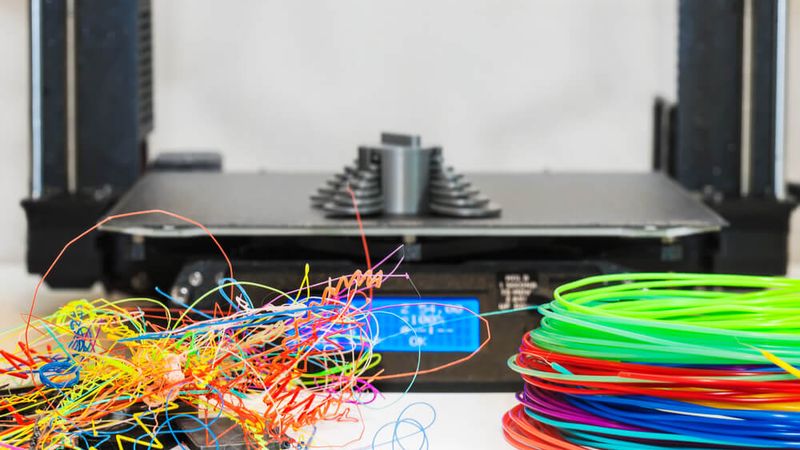PLA Recycling: Can PLA 3D Printer Filament be Recycled?
Here’s what you need to know about recycling PLA 3D printer filament and cutting back on 3D printing plastic waste.
Plastic pollution is a problem we are faced with around the globe, driven by consumer and industrial waste. Every year, millions of tons of plastic waste end up in the ocean, which wreaks havoc on aquatic ecosystems and the communities that rely on them.[1] As a technology that consumes plastic materials, 3D printing plays a role in this global issue and has an environmental impact. It is therefore important that 3D printing materials are properly disposed of and whenever possible reused and recycled.
PLA (or Polylactic Acid) is a bioplastic derived from renewable resources like corn starch or sugarcane—it is also the most widely consumed 3D printing thermplastic. Despite being made from biological sources and marketed as biodegradable, PLA’s environmental promise is not automatically realized without proper end-of-life handling. In this article, we’ll explain the different recycling methods available for 3D printer filaments, take a specific look at PLA and whether it is truly biodegradable, and explore ways to cut back on 3D printing plastic waste in the first place to minimize the ecological footprint of desktop 3D printing.
Can you Recycle 3D Printer Filament?
Fused Filament Fabrication (FFF) is today the most widely used 3D printing technology in the world. The process essentially relies on the simultaneous melting and extrusion of plastic filament materials onto a print bed. When the layer of melted plastic cools, the material solidifies. This is repeated layer by layer, until a three dimensional object is created.
The entire FFF process is enabled by the fact that 3D printer filaments are made from thermoplastic materials. Thermoplastics are characterized by their ability to melt when exposed to specific temperatures and re-solidify when cooled. This material property also means that thermoplastic filaments can be recycled, as material waste can be melted down and reprocessed as pellets or new filament with minimal effects on the material quality or integrity.
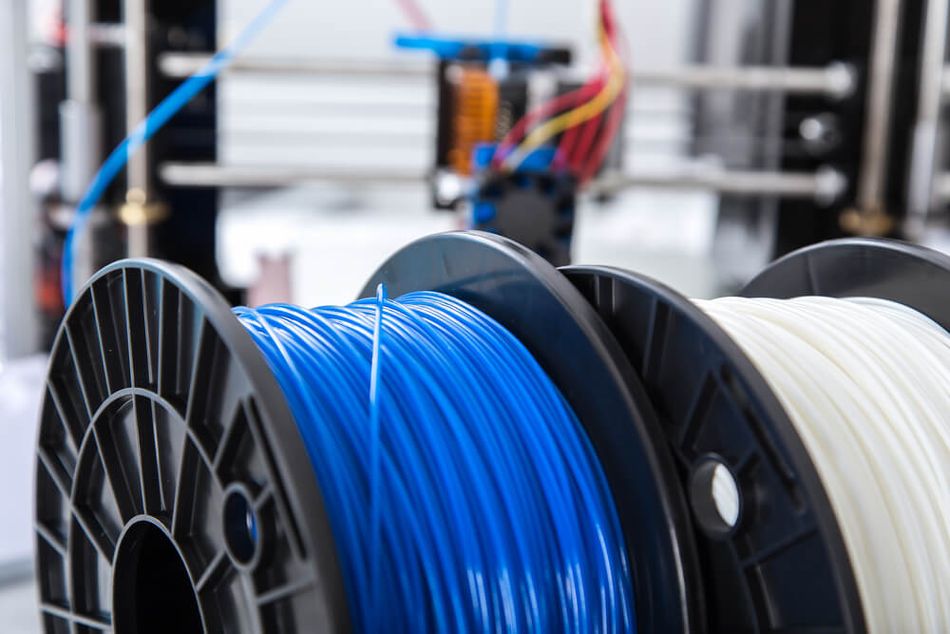
However, while it is technically possible to recycle 3D printer filament, the process is not quite as simple as putting leftover material waste, like supports or failed prints, into the recycling bin to be picked up by your local recycling center. In fact, PLA, ABS, and other common 3D printing filaments are grouped under “Type 7” plastics, which most municipal and community recycling centers do not process.
So how does one go about recycling leftover 3D printing filament? There are a couple of options. First, your town or city may have a specialist recycling center that does process Type 7 materials. If this is the case, you can bring your failed prints and scrap plastic to them to be recycled. Some local maker spaces or 3D printing labs also collect scraps to be sent to a dedicated recycling plant. Alternatively, you can bring your leftover plastic filament and scraps to a material recovery facility, which sorts recyclable plastics and sells them to manufacturers.
If you want to create your own circular economy for 3D printing materials, it is also possible to recycle 3D printer filament at home using a filament extruder. In the simplest terms, this piece of equipment is a machine that melts raw plastic pellets and extrudes the thermoplastic as a filament. If you plan to use failed prototypes and support materials as raw material, you may also need a plastic shredder to turn the parts into pellets that can be processed by the extruder system. With a filament extruder, you can transform your 3D printer waste into new filament, cutting back on waste and saving money in the long term. It should be noted, however, that recycling filament at home can lead to lower quality materials if not done correctly, which increases the risk of part warping.
Recommended reading: Comparison of PLA, ABS, and PETG Filaments for 3D Printing
Can You Recycle PLA?
PLA is among the most commonly used 3D printing filaments today. This is due to a number of factors, including the material’s excellent printability, good dimensional accuracy, and affordability. PLA is also popular because, as a polymer derived from plant starches, it is more eco-friendly than filaments derived from non-renewable resources (such as petroleum-based ABS) and has the benefit of being recyclable and compostable.
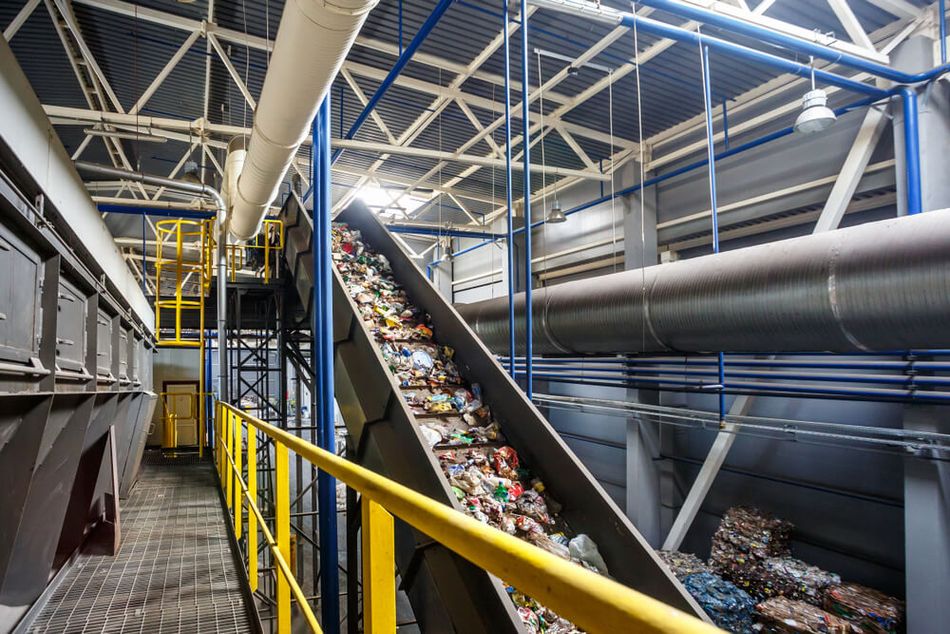
Challenges in recycling PLA
Despite PLA’s green reputation, there are significant challenges when it comes to recycling PLA. One major issue is that PLA doesn’t fit well into existing recycling systems, largely because of the fact that it cannot be mixed with other types of plastic and must be processed alone. This is because PLA has a lower melting point than ABS and other common filaments. For example, PLA’s glass transition temperature is around 60 ℃, while ABS has a glass transition temperature of 105℃, which can cause PLA to act as a contaminant if combined with ABS.[2] Because PLA must be processed separately from other plastics due to the lower melting temperature, many plastic recycling programs do not accept the material. As an alternative, you can choose to recycle your own PLA waste using a plastic shredder and a filament extruder.
There is also an economic and logistical challenge. Many recycling centers don’t collect enough PLA to justify processing it separately. PLA packaging and 3D printed PLA leftovers often constitute a small fraction of plastic waste streams, so dedicated PLA recycling is rare at the municipal level. This means individual makers or institutions must take initiative if they want to recycle PLA, either by using specialized services or investing in their own recycling equipment.
Is PLA Biodegradable?
A big selling point of PLA 3D printer filament is that it is biodegradable. Since PLA is made from plant-based materials derived from crops like corn, it will eventually be broken down into organic material by microorganisms. That being said, labeling a material as biodegradable can be somewhat misleading, since it can still take a long time for the material to break down.
For example, it is not advisable to simply toss PLA printing scraps into trash in the hopes that they will decompose quickly in a landfill. Nor can we recommend putting PLA into your local compost bin. That’s because without the right composting conditions, it can take PLA hundreds of years to degrade. By contrast, if PLA material is disposed of in the right conditions—with controlled temperature, humidity and microorganisms—it can break down in just a few months.[3] It is therefore helpful to think of PLA as only biodegradable if it’s processed at an industrial composting facility.
Recommended reading: PLA bed temperature & print temperature settings
Recycling Processes for PLA
At an industrial level, there are two primary methods for recycling PLA and other thermoplastic filaments: mechanical recycling and chemical recycling.
Mechanical recycling
Mechanical recycling is a widely used method for processing PLA waste. This process involves the physical transformation of PLA waste into new products without altering its chemical structure. The mechanical recycling process typically consists of several stages, including size reduction, washing, drying, and reprocessing.[4]
In the size reduction stage, PLA waste is shredded or ground into smaller particles, making it easier to handle and process. Washing is then performed to remove contaminants, such as dirt, food residues, and other impurities. This step is crucial for maintaining the quality of the recycled material and ensuring that the final product meets the required specifications.
After washing, the PLA particles are dried to remove any remaining moisture. This is because excess moisture can cause issues during the reprocessing stage, such as the formation of bubbles or defects in the final product. Once the PLA particles are dry, they are melted and extruded through a die to form new products, such as pellets, fibers, sheets, or filaments. These recycled PLA products can then be used as raw materials for manufacturing new items, effectively closing the loop in the PLA life cycle.
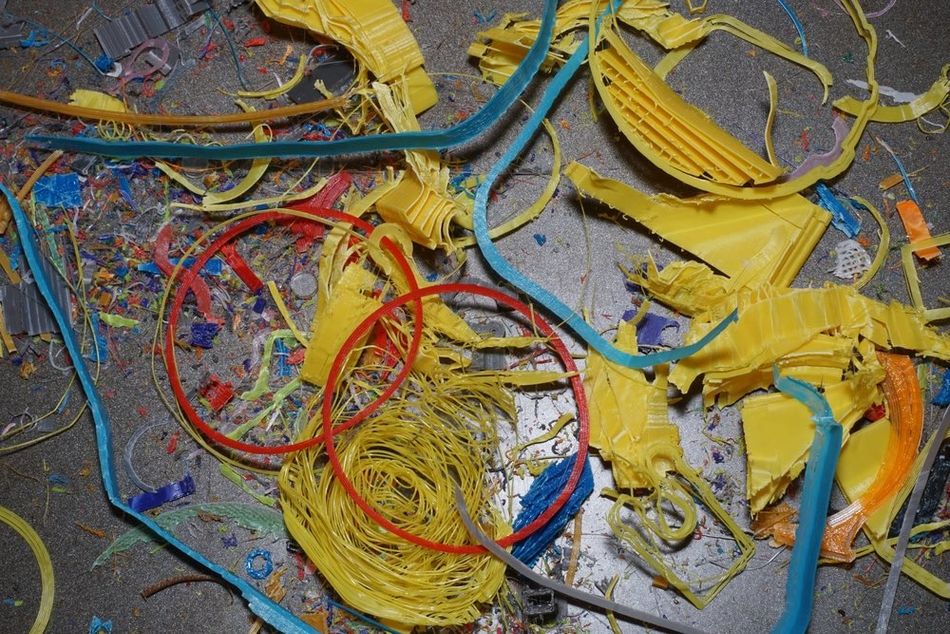
Mechanical recycling offers several advantages, including lower energy consumption and reduced greenhouse gas emissions compared to the production of virgin PLA. However, it also has some limitations. Repeated mechanical recycling can lead to the degradation of PLA's physical properties, such as strength and transparency, due to the exposure to heat and mechanical stress during the process. This degradation can limit the number of times PLA can be mechanically recycled and may require the addition of virgin material or additives to maintain the desired properties of the recycled product.
Chemical recycling
Chemical recycling is an alternative method for processing PLA waste that involves breaking down the polymer into its constituent monomers or other valuable chemicals. This process allows for the recovery of high-quality materials that can be used to produce new PLA or other products, overcoming some of the limitations associated with mechanical recycling.[5]
There are several chemical recycling techniques for PLA, including hydrolysis, methanolysis, and glycolysis. Hydrolysis involves the use of water and an acid or base catalyst to break the ester bonds in the PLA polymer chain, resulting in the formation of lactic acid. Lactic acid can then be purified and polymerized to produce new PLA or used as a building block for other chemicals and materials.
Methanolysis and glycolysis are similar processes that use methanol or ethylene glycol, respectively, as the reaction medium. These methods result in the formation of methyl lactate or glycolide, which can be further processed to recover lactic acid or other valuable chemicals. The choice of chemical recycling method depends on factors such as the desired end products, the available processing equipment, and the specific properties of the PLA waste.
Chemical recycling offers several advantages over mechanical recycling, including the ability to recover high-quality materials with minimal degradation of properties. This process can also handle PLA waste with higher levels of contamination, as the purification steps can remove impurities more effectively than washing in mechanical recycling. However, chemical recycling typically requires more energy and generates more greenhouse gas emissions than mechanical recycling due to the use of chemicals and the need for high-temperature processing.
Despite its challenges, chemical recycling has the potential to play a significant role in the sustainable management of PLA waste. By recovering valuable materials and reducing the need for virgin resources, chemical recycling can contribute to a more circular economy for PLA and other plastics.
DIY PLA filament recycling
Do-it-yourself (DIY) PLA recycling is an approach that enables individuals to process and reuse PLA waste at home or in small-scale settings. To recycle PLA at home, specialized equipment is required, including a shredder or grinder, a filament extruder, and a spooler. The shredder or grinder is used to reduce the size of the PLA waste into small particles, making it easier to process. It is essential to ensure that the PLA waste is clean and free of contaminants before shredding to maintain the quality of the recycled material.
Once the PLA waste has been shredded, it can be fed into a filament extruder, which melts the material and extrudes it through a nozzle to form a continuous filament. The diameter of the filament can be controlled by adjusting the extrusion speed and nozzle size. A spooler is then used to wind the filament onto a spool, making it ready for use in 3D printing.
While DIY PLA recycling offers several benefits, such as reducing waste and promoting a circular economy, it also has some drawbacks. The initial investment in equipment can be relatively high, and the process requires a certain level of technical knowledge and skill to achieve consistent results. Additionally, the quality of the recycled filament may not be as high as commercially available products, which can affect the performance of the final printed objects. Despite these challenges, DIY PLA recycling can be a viable option for individuals and small businesses looking to minimize their environmental impact and reduce material costs.
There are startups and community initiatives that have have emerged to facilitate PLA recycling for 3D printing enthusiasts. For example, there are subscription services where you can mail in your 3D print scraps and receive credit or filament in return. One such program sorts and recycles PLA, offering reward points per kilogram of clean PLA sent in, which users can redeem for new filament. These programs handle the dirty work of shredding and extruding for users who don’t want to invest in personal machinery. On a local level, some maker spaces have set up recycling stations with bins for different materials and partner with recyclers to periodically process the collected plastic. The rise of these services indicates a growing awareness and willingness to recycle within the 3D printing community.
How to Reduce Plastic Waste in 3D Printing
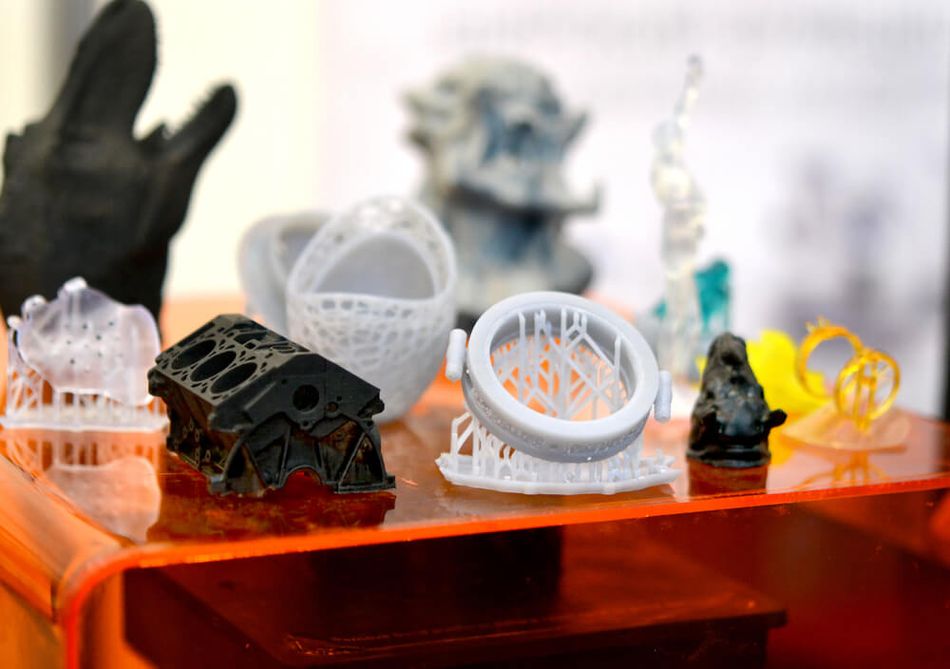
In addition to recycling 3D printing filament, there are many steps you can take to actually reduce the amount of waste your 3D prints generate in the first place, resulting in an overall more sustainable 3D printing process (as well as reduced spending on materials).
Minimize support materials
Support materials play an important role in the FDM 3D printing process, ensuring that parts are stabilized on the print bed. But they are also a significant source of plastic waste. You can minimize the amount of supports by integrating them directly into the 3D model using smart design or by orienting your part strategically on the build platform. Some slicing software programs will also let you manually adjust the amount of supports needed. You can also consider designing parts in pieces that print flat without supports, then assemble them.
Proper bed adhesion
If the first layers of your print job are not sticking to the print bed, there is a strong chance your final print will be defective. Minimize the risk of failed prints (and thus wasted material) by encouraging proper first layer adhesion. For example, using an adhesive or integrating a brim into your design can help adhesion without much added waste material. If you do notice your first layers aren’t sticking, stop the print as early as possible to avoid additional wasted material.
Recommended reading: What to do when PLA is not sticking to print bed
Regular 3D printer maintenance
Another good way to reduce the risk of failed prints and material waste is to ensure regular 3D printer maintenance. Making sure that your printer’s hardware is up to standard and that settings and calibration are correct can increase the machine’s output and reliability, thus resulting in a better success rate for print jobs.
Using recycled filaments
To reduce your environmental impact even further, you can choose to purchase filament from brands that use recycled thermoplastics as raw material. Some companies even provide filament spools made from recycled material or fully recyclable material. This is a more sustainable option as you are participating in a longer life cycle for the plastic material.
Reuse Scrap for Calibration and Prototyping
Not every print needs pristine filament. You can reserve recycled or older PLA for rough prototypes, calibration tests, or draft prints. For instance, when tuning your printer settings or trying a new model for fit, use some of the filament made from recycled scraps (if you have a spool) or an old spool that’s been lying around. Save the virgin, top-quality filament for the final version. This way, you effectively channel your waste into useful experimentation. Even short bits of filament that are too small for a full print can be used for things like testing extrusion flow or doing small model prints to verify quality after maintenance.
Invest in a filament extruder
To establish your own circular 3D printing economy, it might be worthwhile to invest in a filament extruder. This will allow you to recycle any plastic 3D printing waste you generate and turn it into more filament. The upfront cost of the hardware may be high, but it can save you money down the line in material costs and will promote greater sustainability.
Proper Disposal When Necessary
If recycling or reusing PLA isn’t an option, try to dispose of PLA in the most responsible way available. For instance, if your community has an industrial composting service see if they accept PLA materials – but only send PLA to compost if the facility explicitly accepts it and the items are certified compostable. Do not contaminate recycling bins with PLA if your recycler doesn’t handle it; it’s better to put PLA in the trash than to contaminate other recyclable plastics. Some users label their failed prints and leave them out at makerspaces where others can take them for recycling projects. At the very least, store your PLA waste separately so that if an opportunity arises (a new recycling program or a friend with a filament maker), the material is ready to go.
Conclusion
PLA has revolutionized desktop 3D printing with its user-friendly properties, cost accessibility, and bio-derived nature. However, as we have seen, fulfilling PLA’s promise of sustainability requires going beyond just using a “green” material: it demands that we also responsibly manage PLA waste.
As a 3D printer user, it is important to recognize that the technology has an environmental impact as it both consumes plastic and generates waste. Fortunately, there are ways to make the process more sustainable. Even though many local recycling facilities aren’t equipped to process PLA plastics, you can make the effort to seek out specialized facilities that do, find industrial compost centers that accept bioplastics, or recycle your own filament at home. You can also reduce the amount of waste created in the first place by doing things like minimizing support materials, ensuring proper bed adhesion, maintaining your 3D printer, and more.
Frequently Asked Questions (FAQs)
Q: What is PLA?
A: PLA, or polylactic acid, is a bio-based plastic derived from renewable resources such as corn starch, tapioca roots, or sugarcane. It is widely used in industries like packaging, textiles, and 3D printing due to its favorable properties, including biodegradability.
Q: How is PLA recycled?
A: PLA can be recycled through mechanical or chemical processes. Mechanical recycling involves shredding, washing, and reprocessing PLA waste into new products, while chemical recycling breaks down PLA into its constituent monomers or other valuable chemicals. Both processes extend the material’s life cycle.
A: Yes, technically PLA is a biodegradable material since it is made from plant-based resources, like sugarcane and corn. However, PLA plastic can still take hundreds of years to fully decompose if it is not disposed of properly. PLA requires special composting conditions, with controlled temperature and humidity, as well as special microorganisms, which accelerate the decomposition process.
Q: Can you put PLA in compost?
A: While PLA is technically compostable, it requires specific conditions to break down properly. Industrial composting facilities, with their high temperatures (around 60°C), can break down PLA within a few months. However, in home compost systems, where temperatures are lower, PLA often does not break down efficiently and may persist for a long time. Therefore, it's not ideal for home composting.
Q: Can PLA be recycled at home?
A: Yes, PLA filament can be recycled at home using specialized equipment, such as a shredder, filament extruder, and spooler. It is, however, important to note that the quality of the recycled filament can start to degrade over time as it is recycled over and over again.
Q: What are the environmental benefits of PLA recycling?
A: PLA recycling helps reduce waste, decrease the consumption of virgin resources, and lower greenhouse gas emissions compared to the production of new PLA. By recycling PLA, we can promote a more sustainable and circular economy for biodegradable plastics. Perhaps the biggest environmental benefit comes from reducing plastic waste to begin with, which can be achieved by minimizing supports, reducing infill, and ensuring proper bed adhesion.
References
[1] The world's plastic pollution crisis explained. [Internet] National Geographic; June 19, 2019 [Cited February 22, 2022] Available from: https://www.nationalgeographic.com/environment/article/plastic-pollution
[2] PLA vs. ABS: Which Filament Should One Use? [Internet] Wevolver; April 23, 2021 [Cited February 23, 2022] Available from: https://www.wevolver.com/article/pla-vs-abs-which-filament-should-one-use
[3] Is PLA Filament Actually Biodegradable? [Internet] 3DNatives; July 23, 2019 [Cited February 22, 2022] Available from: https://www.3dnatives.com/en/pla-filament-230720194/#!
[4] Mechanical recycling [Internet] Plastics Europe; 2023 [Cited October 26, 2023] Available from: https://plasticseurope.org/sustainability/circularity/recycling/mechanical-recycling/
[5] McKeown P, Jones MD. The chemical recycling of PLA: A review. Sustain. Chem. 2020 Jun;1(1):1-22. Available from: https://doi.org/10.3390/suschem1010001
Table of Contents
Can you Recycle 3D Printer Filament?Can You Recycle PLA?Challenges in recycling PLAIs PLA Biodegradable?Recycling Processes for PLAMechanical recyclingChemical recyclingDIY PLA filament recyclingHow to Reduce Plastic Waste in 3D PrintingMinimize support materialsConclusionFrequently Asked Questions (FAQs)References
